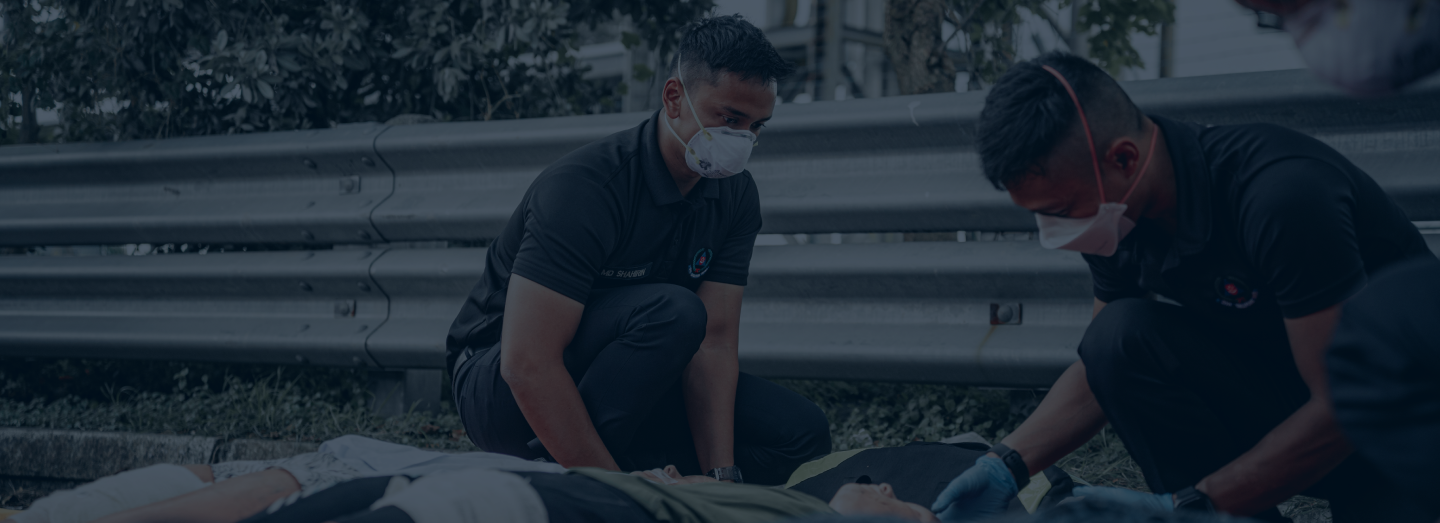At a local hospital in Naypyidaw, Myanmar, makeshift tents had been set up to house patients following the 7.7-magnitude earthquake on 28 March 2025. As people of all ages with injuries and ailments of varying severity waited in line, the medical staff worked tirelessly to render medical assistance to each patient.
Among the responders were CPT (Dr) Sarvananthan Rajragavan and CPT (Dr) Quek Seng Leong. Both were full-time National Servicemen (NSFs) Medical Doctors, and part of the SCDF’s 80-member Operation Lionheart contingent that was deployed to Myanmar on 29 March.
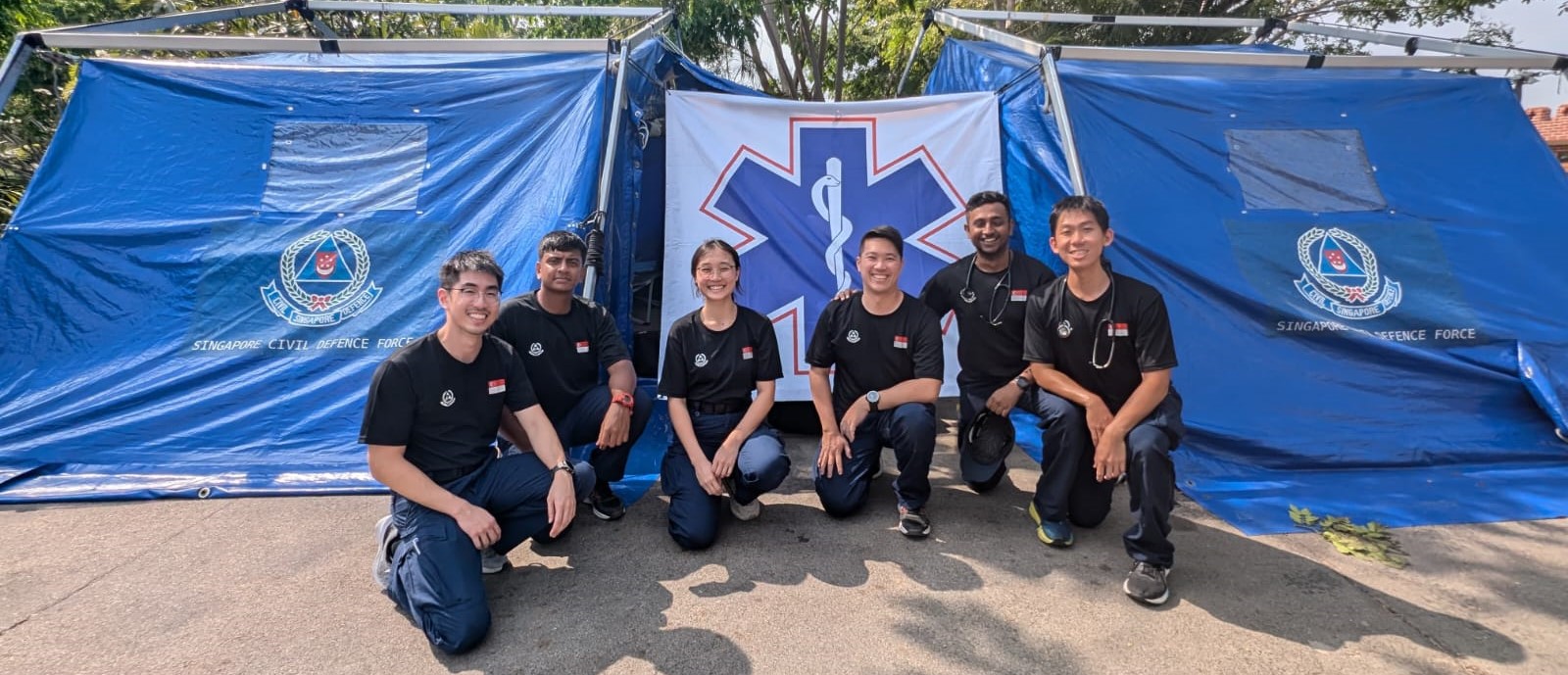 The six-member medical team in Myanmar. (From left to right) Paramedics SGT3 Glenn Chua Chen Hwee, WO1 Divanraj Batumalai, LTA Joanne Lau, and WO1 Au Lon Chiu Ben, with CPT (Dr) Sarvananthan Rajragavan, and CPT (Dr) Quek Seng Leong. PHOTO: CPT (DR) QUEK SENG LEONG
The six-member medical team in Myanmar. (From left to right) Paramedics SGT3 Glenn Chua Chen Hwee, WO1 Divanraj Batumalai, LTA Joanne Lau, and WO1 Au Lon Chiu Ben, with CPT (Dr) Sarvananthan Rajragavan, and CPT (Dr) Quek Seng Leong. PHOTO: CPT (DR) QUEK SENG LEONG
For the two young doctors, Operation Lionheart was more than just a mission. They witnessed firsthand the fragility of life and the resilience of the human spirit in the face of a disaster.
The call of duty
CPT (Dr) Rajragavan and CPT (Dr) Seng Leong were conducting a routine lecture for the Rota Commander Course cadets, when they first received news of the devastating earthquake. Within hours, they were ready for deployment.
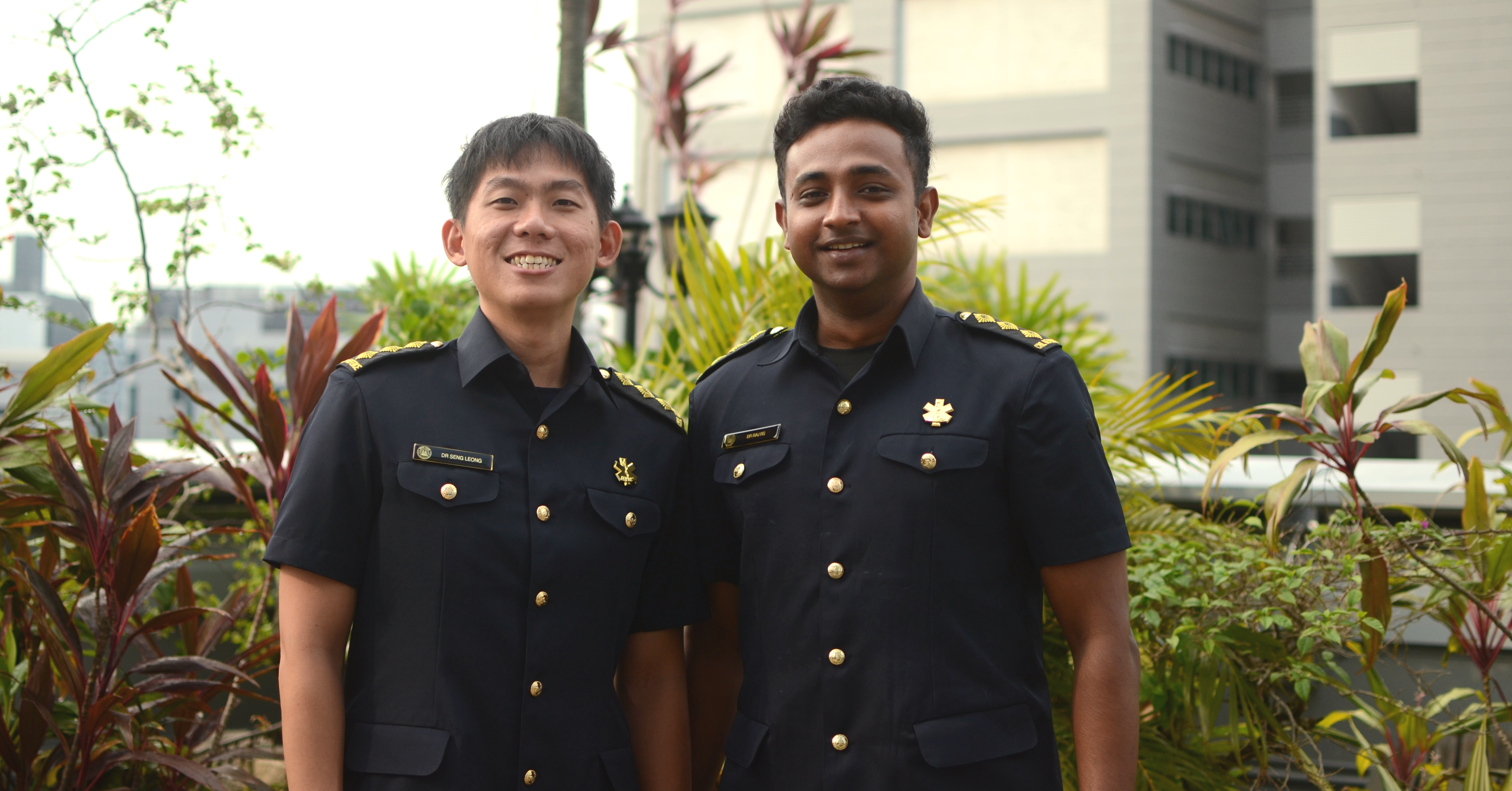 CPT (Dr) Seng Leong (left) and CPT (Dr) Rajragavan (right), both 27, have studied medicine for five years and specialised at hospitals for about two years, before their National Service as Medical Doctors with the SCDF. PHOTO: SCDF
CPT (Dr) Seng Leong (left) and CPT (Dr) Rajragavan (right), both 27, have studied medicine for five years and specialised at hospitals for about two years, before their National Service as Medical Doctors with the SCDF. PHOTO: SCDF
“When we heard about the earthquake, we were mentally ready to be deployed,” recalled CPT (Dr) Rajragavan. “Such humanitarian missions embody what it means to be a doctor, using our knowledge and skills to bring relief and hope to those in need.”
En route to Naypyidaw, CPT (Dr) Seng Leong simulated the contingency plans in his mind. “I was thinking through the various medical scenarios. For instance, if 20 casualties were to come in at once, how should we prioritise and manage their treatment?” he shared. “With lots of support from our medical team, we adapted well to the situation.”
On the ground
Arriving at Naypyidaw within the 72-hour “golden window” of finding survivors, the contingent commenced search operations and worked through the night.
“We followed our Disaster Assistance and Rescue Team (DART) Specialists, providing medical support during search and rescue operations,” CPT (Dr) Rajragavan said.
“Watching our DART colleagues entering partially collapsed structures to search for survivors was inspiring. Their dedication and courage motivated me to give my best too,” he added.
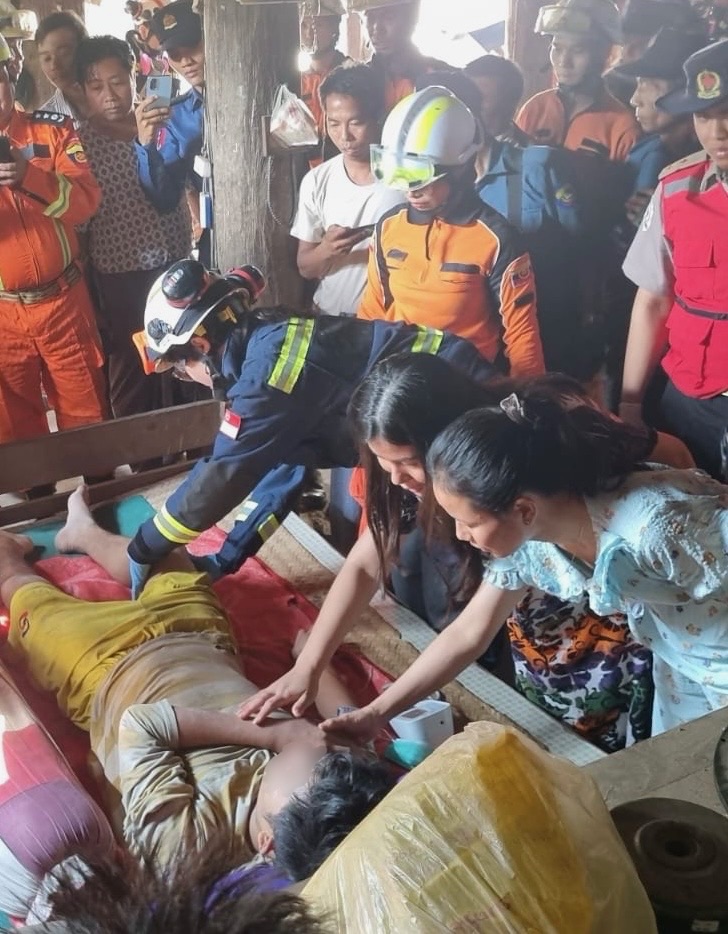 SCDF rescued a man from a partially collapsed residential building after an eight-hour joint rescue operation with the Myanmar Fire Services Department. After LTA Joanne Lau (examining the man’s leg) assessed the man to be stable and conscious, he was conveyed to a local hospital. PHOTO: SCDF
SCDF rescued a man from a partially collapsed residential building after an eight-hour joint rescue operation with the Myanmar Fire Services Department. After LTA Joanne Lau (examining the man’s leg) assessed the man to be stable and conscious, he was conveyed to a local hospital. PHOTO: SCDF
One particular encounter left a lasting impact on CPT (Dr) Rajragavan. “A woman came to us in tears, asking us to rescue her son who was trapped beneath the rubble. I will never forget the pain in her eyes,” he recalled. “Having witnessed how people lost their family members and homes overnight taught me to never take our stability and peace for granted.”
To further support affected communities, the contingent established medical outposts in Pyokkon and Dhakhinna Thiri Townships, where they provided medical care to over 130 local residents. Many of them had sustained injuries during the earthquake, while others had acute post-earthquake symptoms such as dizziness, and musculoskeletal injuries from carrying heavy loads while seeking refuge from the earthquake.
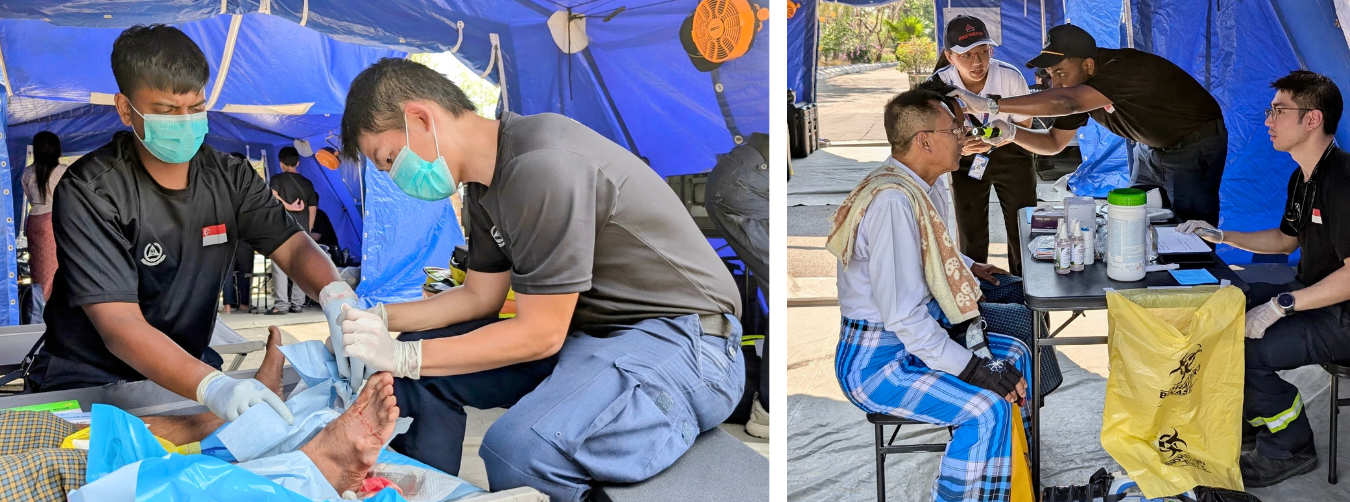 (Left image) WO1 Divanraj Batumalai (left) and CPT (Dr) Quek Seng Leong (right) treating a local resident. (Right image) SGT3 Glenn Chua Chen Hwee (first from right) and CPT (Dr) Sarvananthan Rajragavan (second from right) working alongside Hsu (third from right), a Burmese interpreter, as they rendered medical assistance to various patients. PHOTO: SCDF
(Left image) WO1 Divanraj Batumalai (left) and CPT (Dr) Quek Seng Leong (right) treating a local resident. (Right image) SGT3 Glenn Chua Chen Hwee (first from right) and CPT (Dr) Sarvananthan Rajragavan (second from right) working alongside Hsu (third from right), a Burmese interpreter, as they rendered medical assistance to various patients. PHOTO: SCDF
“With their wealth of experience on the frontlines, our paramedics were incredibly skilled. There was deep mutual trust in the team, and we learnt much from each other,” CPT (Dr) Seng Leong said.
A new perspective
Back in Singapore, both doctors gained a renewed sense of purpose.
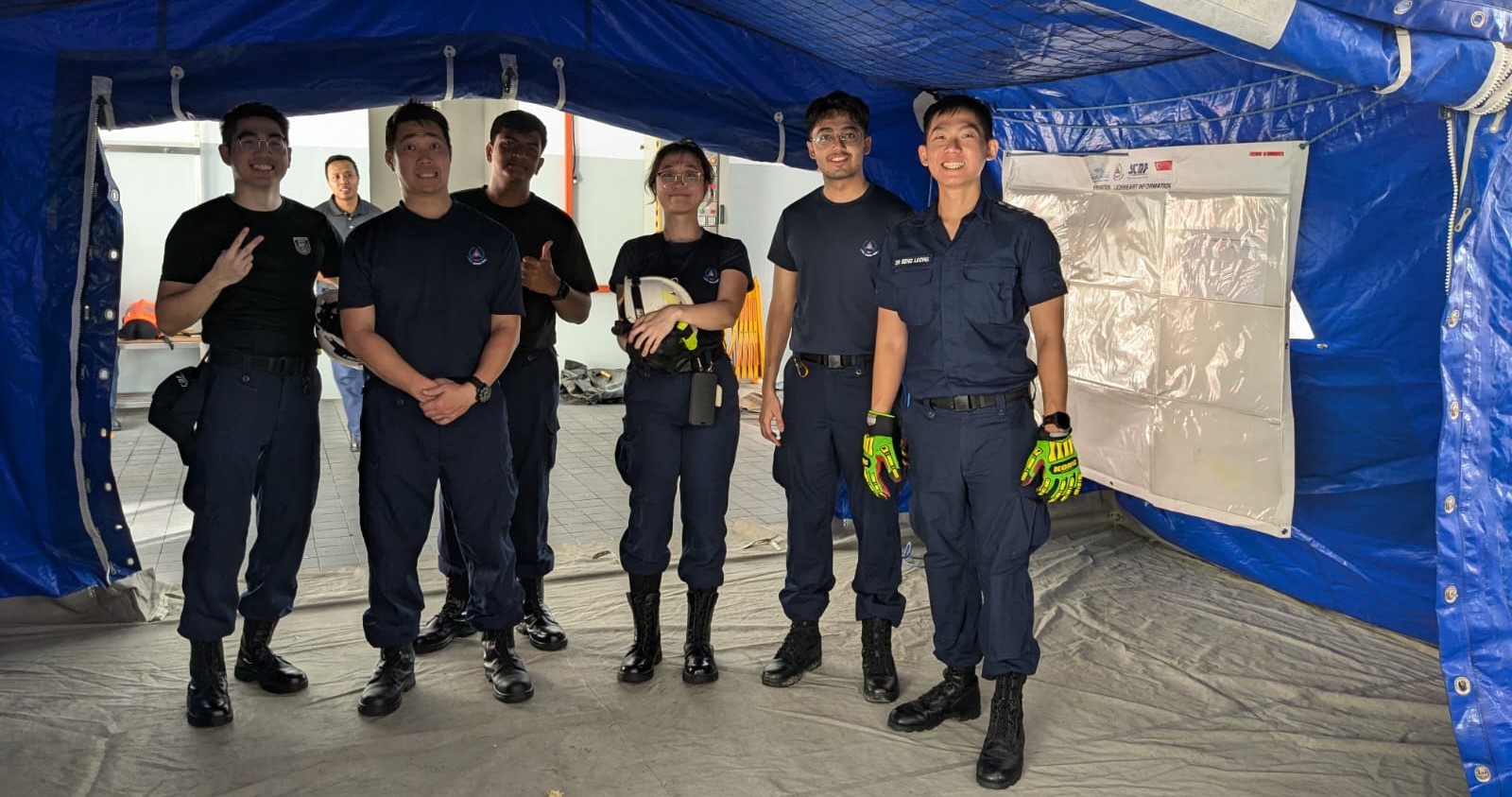 The medical team during a training session on 9 January 2025 at Paya Lebar Fire Station. PHOTO: CPT (DR) QUEK SENG LEONG
The medical team during a training session on 9 January 2025 at Paya Lebar Fire Station. PHOTO: CPT (DR) QUEK SENG LEONG
“Operation Lionheart has shown how Singapore can support our ASEAN neighbours in times of need,” CPT (Dr) Rajragavan said.
“I often ask myself, ‘how can I add value?’ and I realised that using my medical expertise to help others was the answer. Even after completing my full-time National Service, I hope to continue contributing to future Operation Lionheart missions as an Operationally Ready National Serviceman,” he added with a smile.
For CPT (Dr) Seng Leong, the experience has changed his views of National Service. “National Service gives us the opportunity to contribute to the nation in our own unique way. Once you find meaning in what you do, you will discover a deep sense of purpose and fulfilment.”
